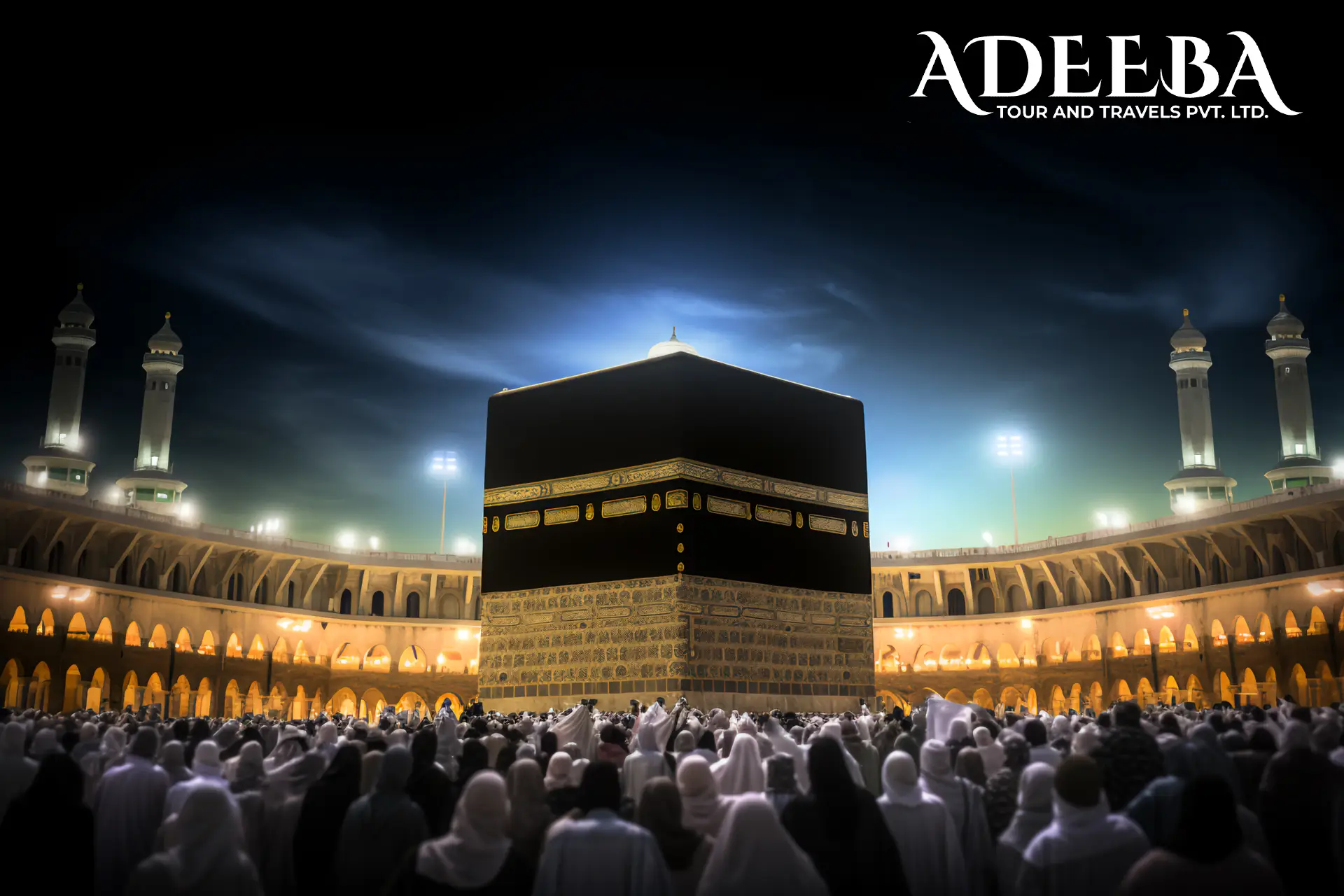-
89A, Shakespeare Sarani, Near Bhawan Chowdhury Masjid
(Park Circus 7 point)
Kolkata - 700017
- Working Hours
Mon - Sat
10 am - 07 pm

The foundation of Islam lies on the five pillars. Hajj is one of these five pillars. The others are shahadah, i.e. declaration of faith; salat, i.e. daily prayer; zakat, i.e. giving of alms and sawm, i.e. fasting in Ramadan. Hajj as per its literal meaning which is “to intend a journey”; this is a yearly ritual that is characterising by an annual visit to the holy city Mecca by Muslim. According to Quran those who accomplish Hajj will be treated as the guests of Allah in His house. However, there are few rules that people consider before opting for Hajj. Those who are not sound mentally, physically or financially are exempted from Hajj. It is also said that the hajj must perform with the money that is halal as per Islamic rules.
Each year approximately 2-3 million Muslim from all over the earth; gather in Mecca during Dhu-al-Hijjah, the last month of Islamic calendar for Hajj. The different rituals of Hajj are performed within 8th to the 12th day of Dhu-al-Hijjah. Each of these rituals represents an ancient incident happened in the life of different prophets.
As per the dialect of the Quran, there are three types of Hajj namely, Hajj-e-Ifrad, Hajj-e-Qiran and Hajj-e-Tamattu.
Hajj-e-Ifrad is generally performed by residents of Mecca as well as in hilly areas which lies between Miqaat and the areas of Haraam. The person who performs Hajj-e-Ifrad denoted as Mufrid. The Mufrids does not need to combine Umrah with Hajj. All they do is put on their ihram on any of the Miqaat points performs Niyyah and heads towards Hajj.
In the case of Hajj-e-Qiran, the person who performs it called Qarin. They have to perform both the Umrah and Hajj with the same ihram.
Hajj-e-Tamattu is the most common type of Hajj that most of the Muslims perform. The person who does such hajj is called Mutamatti. They also have to perform both Umrah and Hajj together, but they can give up their Irhams after finishing Umrah. However, they have to put it on again before starting the rituals of Hajj.
In the following portion, the detailed step by step rituals of Hajj is discussed.
7th Dhu-al-Hijjah is the preparatory stage of Hajj. People who have arrived Mecca before 7th Dhu-al-Hijjah and willing to do Hajj-e-Tamattu in Ihram normally head towards Masjid al-Haram for welcome Umrah and put down their ihram whereas those who reach Mecca on 7th Dhu-al-Hijjah and willing to perform Hajj-e-Qiran do the same but they do not put down ihram. All pilgrims prepare for Hajj in the night hours on 7th Dhu-al-Hijjah.
The 8th Dhu-al-Hijjah starts right after the Maghrib prayer of 7th Dhu-al-Hijjah. Pilgrims heads towards Mina on their Ihram and offer Zuhr, Asr and Maghrib.
9th Dhu-al-Hijjah is the 2nd day and the most important day of Hajj. The day initiates just after Maghrib of 8th Dhu-al-Hijjah. Pilgrims perform Isha prayer and stay in Mina at that night. The pilgrims leave the place after performing Fajr payer along with Takbir Tashriq as well as Talbiyah and head towards Arafat.
Waquf begins with the declining of Sun and ends on sunset which is also called Zawal. Pilgrims are instructed to spend the entire time by uttering Talbiyah and praying, seeking forgiveness, repenting on their sin and offering Darud Sharif. They also offer a combined Zuhr and Asr prayer in Masjid-e-Namrah.
With the setting Sun pilgrims head towards Muzdalifah without doing Maghrib prayer while reciting Talbiyah and Zikr on the way. Once they reach Muzdalifah, they perform both Maghrib and Isha prayers together at Isha time. Pilgrims also collect pebbles for Ramy, which is to be performed on the very next day.
On the third Day of Hajj, pilgrims do Fajr prayer and Wakuf at Muzdalifa and then leave for Mina to perform first Ramy at Jamratul Aqabah. They have to throw seven consecutive pebbles towards the pillars that represent Satan. Once they finished with their Ramy, they proceed with Qurbani or Sacrifice as per their budget. After finishing Qurbani men should shave their hair and proceeds to Mecca for Tawaf uz Ziyarah and Sa’y. Pilgrims Return to Mina when Tawaf uz Ziyarah and Sa’y is completed and spend the night there.
In the next morning, pilgrims head towards Jamarat-al-Ula’, ‘Jamarat-al-Wusta’ and ‘Jamarat-al-Aqaba’ for stoning satan. They start with Jamarat-al-Ula’ at first and then heads towards Jamarat-al-Wusta and Jamarat-al-Aqaba respectively. The pilgrims throw seven pebbles at each of these three pillars. After finishing Rami, they can return to their place and spend the rest of the day doing prayer, repenting for sin and asking for forgiveness.
12th Dhu-al-Hijjah is the last day of Hajj. The day starts heading towards Jamarat for stoning devil in the mentioned order and then leaves for Mecca. In Mecca, they now have to do Tawaf-e-Wida (Farewell Tawaf) to complete their Hajj with an intention to return to their country from Mecca. After Tawaf-e-Wida they can put down Irham and start doing the activity that is inhibited during Irham.
